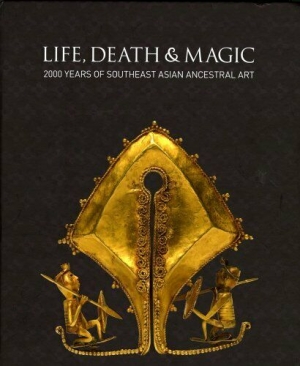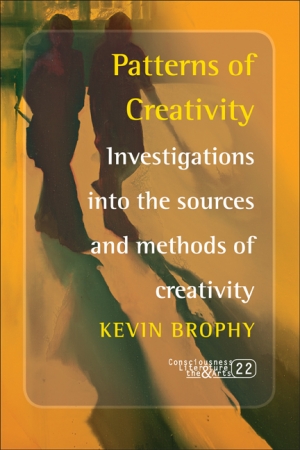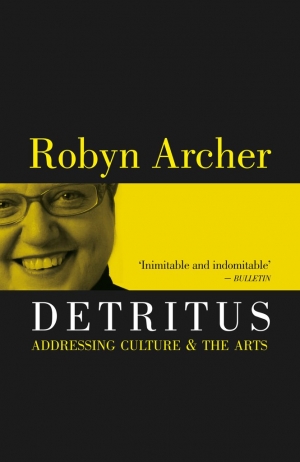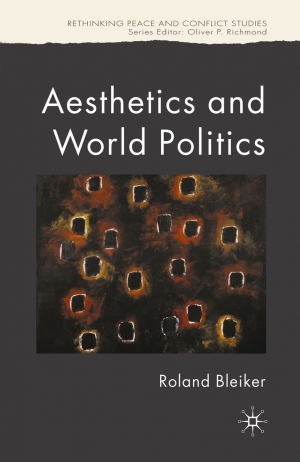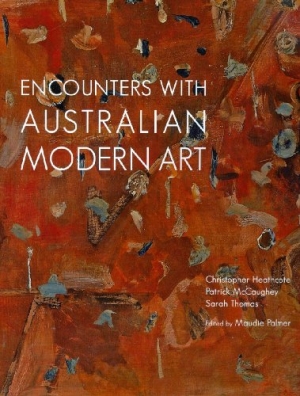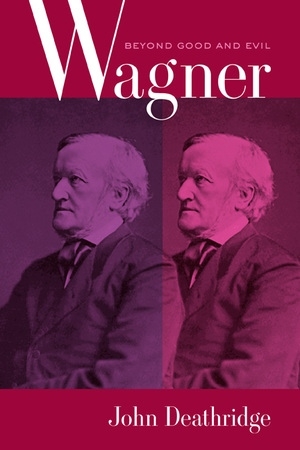Arts
Carol Cains reviews 'Life, Death and Magic: 2000 years of Southeast Asian Ancestral Art' by Robyn Maxwell
Imagine living in a world also inhabited by the spirits of the ancestors, whose goodwill is essential to the ongoing fertility and prosperity of the community. Life, Death and Magic: 2000 Years of Southeast Asian Ancestral Art reveals this view of the cosmos, and explores the relationship between art and the world of the ancestors in South-East Asia. It is published in association with the ground-breaking exhibition of the same name curated by Robyn Maxwell, Senior Curator of Asian Art at the National Gallery of Australia, where it was recently on display.
... (read more)Felicity St John Moore reviews 'Arnold Shore: Pioneer Modernist' by Rob Haysom
Arnold Shore: Pioneer Modernist, by Rob Haysom, fills in the gap between late Impressionism, tonal Meldrumism, and Fred Williams. Attractively presented and illustrated, Haysom’s well-written and informative text examines Arnold Shore’s personal insecurity and the searching nature of his alla prima art, especially his concern with texture and colour; and his contribution as an art teacher and long-time critic.
... (read more)Jane Goodall reviews 'Patterns of Creativity: Investigations into the sources and methods of creativity' by Kevin Brophy
In his conclusion to this book, Kevin Brophy states a key principle of creative composition: ‘to be responsive to what happens, what is thrown into the mind, what one comes upon.’ This is at once a statement of advice for an artist at work, and a theoretical proposition. Through the course of the ten essays that make up the volume, Brophy develops a hypothesis about the kinds of brain function involved in creativity and, in particular, the role of consciousness in relation to other mental and sensory forms of intelligence. Without drawing the terms ‘theory’ and ‘practice’ into play – a great relief to those of us who have grown weary of that inevitable binary – he suggests that the work of an artist or writer may be facilitated by an exploratory interest in the operations of consciousness.
... (read more)A sarcastic little slogan on a wall in Australia’s arts funding organisation in the mid-1990s read ‘Il y a trop d’art’. All right, it was meant in jest, but it seemed to hint broadly at shared bureaucratic resentment of importunate artists, even though they were the Council’s clients and the reason, indeed, for its very existence. Remember the national health hospital in Yes Minister that ran perfectly until it had to take patients?
... (read more)Manfred B. Steger reviews 'Aesthetics and World Politics' by Roland Bleiker
Ever since Plato famously proposed to banish poets and their ‘embellished tales’ from his ideal Republic, the relationship between art and politics has been strained. On the negative end of the spectrum hovers the warning example of a failed Austrian landscape painter who proceeded to push the world into total war. What makes things even worse is that the remarkable appeal of Hitler’s ghastly vision in 1930s Germany owed much to the efforts of sympathetic artists such as Leni Riefenstahl or Gottfried Benn. But even more inspiring figures on the positive end of the spectrum – Václav Havel and Melina Mercouri come to mind here – usually fall from popular grace once they accept political office.
... (read more)Lee Christofis reviews 'Robert Helpmann: A rare sense of the theatre' by Kathrine Sorley Walker
Last year marked the centenary of Robert Helpmann’s birth. Apart from a tribute at the Helpmann Awards ceremony – the ‘Bobbies’ – in July 2009, no Australian performing arts company celebrated the anniversary of this polymorphous artist and early advocate for a national artistic life created by Australians, not by northern-hemisphere exporters. Two new books and a vibrant touring exhibition went part of the way towards providing a fitting tribute.
... (read more)'‘In for “Higher Art” I’d Go’' At the National Portrait Gallery' by Humphrey McQueen
When the National Portrait Gallery (NPG) opened in Canberra last December, more thoughtfulness was evident in its bookshop than the hang. The volumes are arranged by subject and in alphabetical order: the images accord to no principle beyond décor. Here are five writers; there, four scientists. The randomness of the whole embodies a culture of distraction. The root of this muddle is an evasion of whether the Gallery is to be guided by aesthetics or museology. The want of clarity is compounded by concern among staff not to be identified with a history museum.
... (read more)Daniel Thomas reviews 'Encounters with Australian Modern Art' by Christopher Heathcote, Patrick McCaughey and Sarah Thomas
Eva Gandel and Marc Besen Married in Melbourne in 1950 and soon began collecting current art. After the closure of John Reed’s privately established but short-lived ‘Museum of Modern Art & Design of Australia’, they bought a few of its de-accessioned possessions, paintings by John Perceval and Sidney Nolan. In the 1970s they added works by recentlydeceased Sydney artists William Dobell, Ralph Balson, and Tony Tuckson. These were perceived ‘gaps’ in a collection of recent Australian art. Perhaps the systematic history of Australian art then profusely displayed in the private collection formed by their relative Joseph Brown, and first published in 1974 as Outlines of Australian Art, had inspired the Besens to be more systematic. Hitherto, they had mostly encountered local work by living artists.
... (read more)I hesitated before deciding to see Summer of the Seventeenth Doll at La Boite in Brisbane this year. Revivals, even under ideal circumstances, can be chancy. The author, Ray Lawler, had reservations about the presentation of his signature work in the round, and so did I. More than fifty years had passed since he wrote it and since I saw it performed behind a conventional proscenium arch in Brisbane, with Lawler himself playing Barney. A story about manual cane-cutters would seem to my children as remote in time and place as one about stokers on a steamboat would have to me, when I first saw the play. Then, there were few, if any, mechanical cane harvesters. There was still plenty of work for rural, manual workers. These were hard, strong men who bankrolled themselves in the season in order to take their leisure afterwards in the big smoke: not just cane-cutters but also shearers, drovers, fencers, fruit pickers and contract miners in Mount Isa and Kalgoorlie and Broken Hill and other distant places.
... (read more)Robert Gibson reviews ‘Wagner Beyond Good and Evil’ by John Deathridge
Yet another book on Wagner. Given the title, you might expect it to be an investigation of Wagner’s complex relationship with Nietzsche or, failing that, a study which, like Nietzsche’s Beyond Good and Evil (1886), attempts to push the examination of a given subject beyond the limits to which it hitherto has been confined. The blurb on the dust jacket appears to suggest the latter: ‘Deathridge engages the debates that have raged about him [Wagner] and moves beyond them, towards a fresh and engaging assessment of what Wagner ultimately achieved.’ Well, yes and no.
... (read more)
